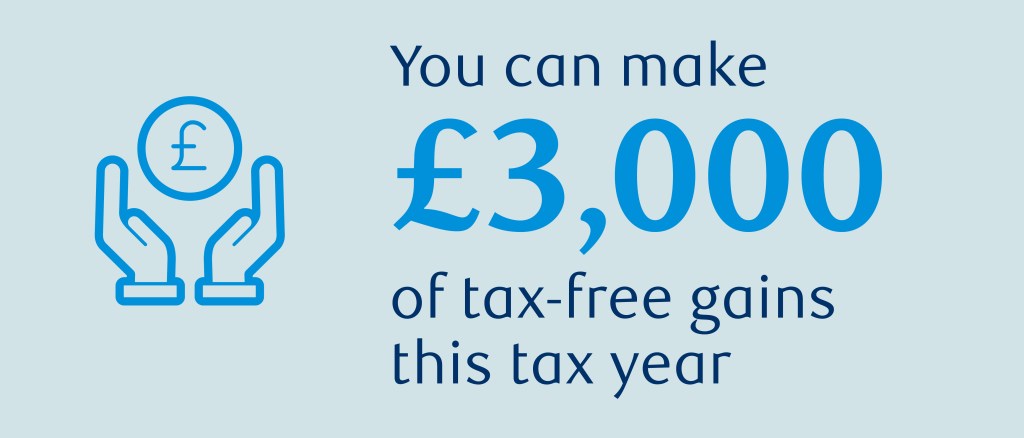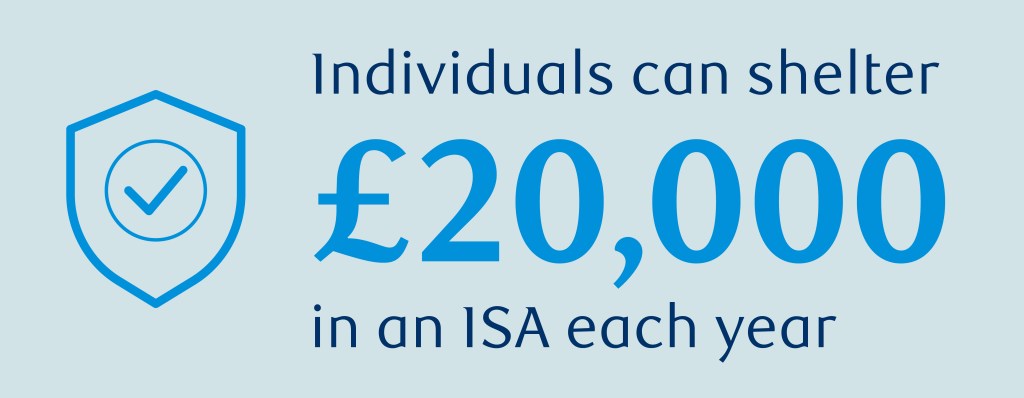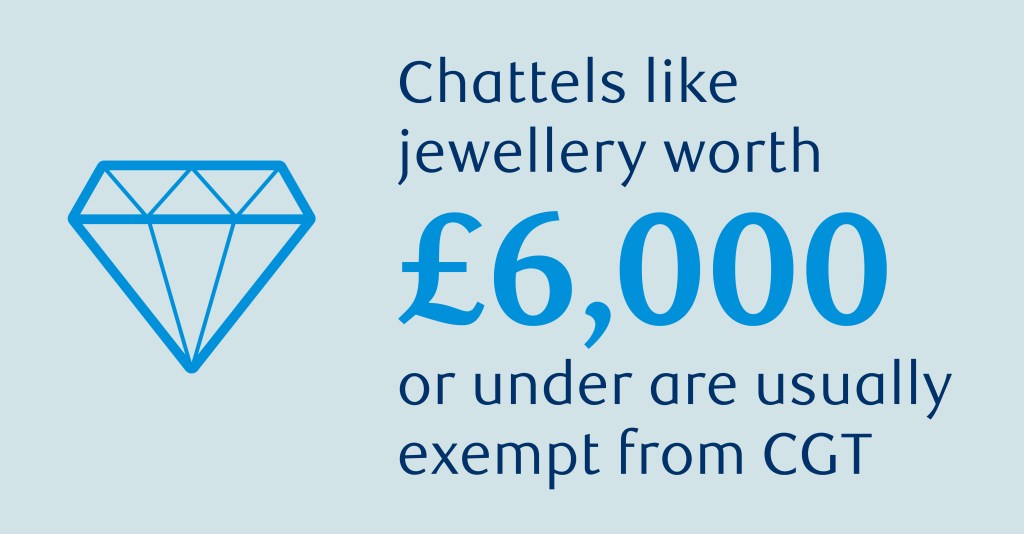10 ways to manage your CGT liability
PerspectiveIncreased capital gains tax rates and cuts to the annual exemption mean that arranging your investments as tax efficiently as possible is more important than ever.
9 October 2025 | 6 minute read
Imogen Congdon
Financial Planner
RBC Brewin Dolphin
Following changes to capital gains tax (CGT), the amount the UK government collects from the tax is expected to almost double to £25.5bn by 2029/2030.[1] That’s because, since October 2024, CGT rates have risen from 10% to 18% for basic rate taxpayers and 20% to 24% for higher and additional rate taxpayers.
There are lots of ways to manage your CGT bill, leaving more money for the things you want to do − whether that’s buying a new home or supporting your grandchild. Here are 10 ideas to explore.
1. Use your CGT exemption
Everyone has an annual CGT exemption, which enables you to make tax-free gains of up to £3,000 in the current tax year (but can’t be carried forward into the next tax year). Any gains you make above this limit may be liable for CGT. So even though the allowance is less generous than in the past, making full use of it each year could reduce the risk of incurring a bigger CGT liability in the future.

2. Make use of losses
You might be able to minimise your CGT liability by using losses to reduce your gain. Gains and losses realised in the same tax year must be offset against each other, which can reduce the amount of gain that is subject to tax. Unused losses from previous years can be brought forward, provided they are reported to HMRC within four years from the end of the tax year in which the asset was disposed of.
3. Transfer assets to your spouse or civil partner
Transfers between spouses and civil partners are exempt from CGT, which means assets can be transferred from one partner to the other to use each person’s annual CGT exemption. This effectively doubles the CGT exemption for married couples and civil partners. Note that the transfer must be a genuine, outright gift.
4. Invest in an ISA or ‘bed and ISA’
Gains (and losses) made on investments held within an ISA are exempt from CGT, so it makes sense, particularly for higher and additional-rate taxpayers, to use your ISA allowance each year.
In the current tax year, you can invest up to £20,000 in an ISA. For married couples and civil partners, the ISA allowance effectively doubles to £40,000.

There is also a tactic called ‘bed and ISA’, which involves selling investments to realise a capital gain and then immediately buying back the same investments inside an ISA. This enables all future gains on the investment to be CGT free.
It’s important to note that by selling investments, you’ll trigger a gain or loss in the current year. If the gain exceeds your annual CGT allowance, you may need to pay tax on the excess.
Bear in mind that you may pay stamp duty and other costs when repurchasing investments in an ISA and there’s a risk that time out of the market, however small, will detrimentally impact your investments. If you’re unsure, speak to your wealth manager.
5. Contribute to a pension
Making a pension contribution from relevant earnings could help you save on CGT because it effectively increases the upper limit of your income tax band.
If, for example, you made a gross pension contribution of £10,000, the point at which higher-rate tax becomes payable would rise from £50,270 to £60,270 (2025/26 tax year). If your capital gain plus other taxable income fell within this extended basic-rate income tax band, CGT would be payable at 18% instead of 24%, provided the gain wasn’t from residential property. This means you could save 6% on the tax.
6. Give shares to charity
If you donate land, property or qualifying shares to a registered charity, you can benefit from both income tax relief and CGT relief. This means you can deduct the asset’s full market value from your taxable income and you won’t have to pay CGT on any gains, respectively, making it a tax-efficient way to support causes you care about.
7. Invest in an Enterprise Investment Scheme
Any gains that are made on investments in an Enterprise Investment Scheme (EIS) are free from CGT if held for three or more years.
You might be able to defer a capital gain by investing that gain in an EIS-qualifying company, but only if the investment is made one year before or up to three years after the gain arose. The deferred capital gain will come back into charge once you take your money out of the EIS-qualifying company.
EISs are higher risk than traditional investments and can be harder to sell, so are not appropriate for all investors – seeking financial advice is strongly recommended.
8. Claim gift hold-over relief
Gift hold-over relief could be available if you give away certain business assets or sell them for less than they are worth to help the buyer. If you’re eligible, you won’t pay CGT when you give away the assets, but the person you give them to might be liable for CGT when they sell them. You must meet several eligibility conditions, so if you’re unsure speak to your wealth manager.
9. Make gains on chattels that escape CGT
Gains on possessions such as antiques and collectibles, called ‘chattels’, may be tax free. For example, items with a predictable life of 50 years or fewer, known as ‘wasting assets’, are CGT free, provided they were not eligible for business capital allowances. Wasting assets include antique clocks, vintage cars, pleasure boats and caravans.
For non-wasting chattels, like paintings and jewellery, the CGT position depends on the sale proceeds, with those £6,000 or under usually being exempt.

10. Seek professional advice
CGT is a complicated subject, and your wealth manager or tax adviser can help you understand the available tax reliefs, allowances and exemptions, and explain the range of options available to you based on your circumstances. Future proof your financial journey, so that you can focus on what really matters.
Speak to your RBC Brewin Dolphin wealth manager or a tax adviser if you have questions about managing your CGT liability.
About the author

Imogen Congdon
Financial Planner
Imogen joined Brewin Dolphin in 2022 and is a Financial Planner in the London office. She creates financial plans and advises private clients in the accumulation phase leading up to and during retirement.
[1] Capital gains tax, Office for Budget Responsibility, March 2025
The value of investments, and any income from them, can fall and you may get back less than you invested. This does not constitute tax or legal advice. Tax treatment depends on the individual circumstances of each client and may be subject to change in the future. You should always check the tax implications with an accountant or tax specialist. Information is provided only as an example and is not a recommendation to pursue a particular strategy. Information contained in this document is believed to be reliable and accurate, but without further investigation cannot be warranted as to accuracy or completeness.